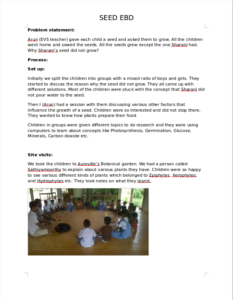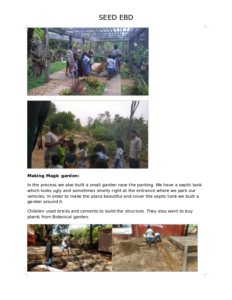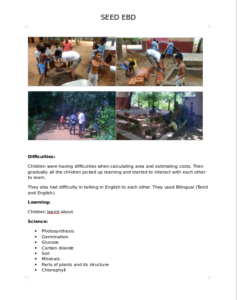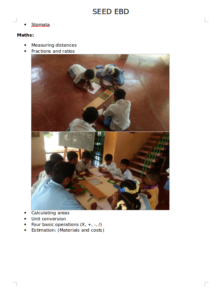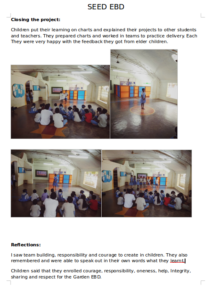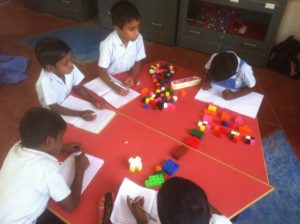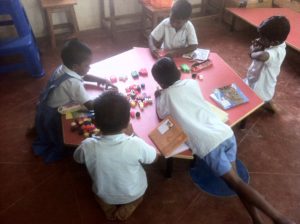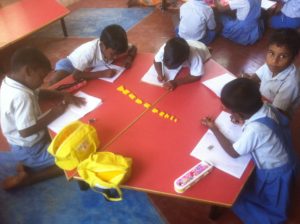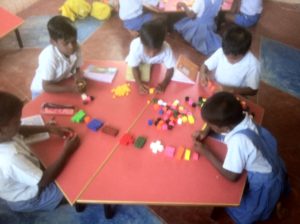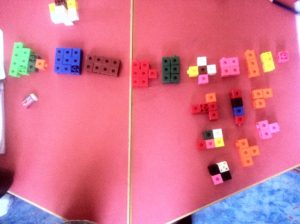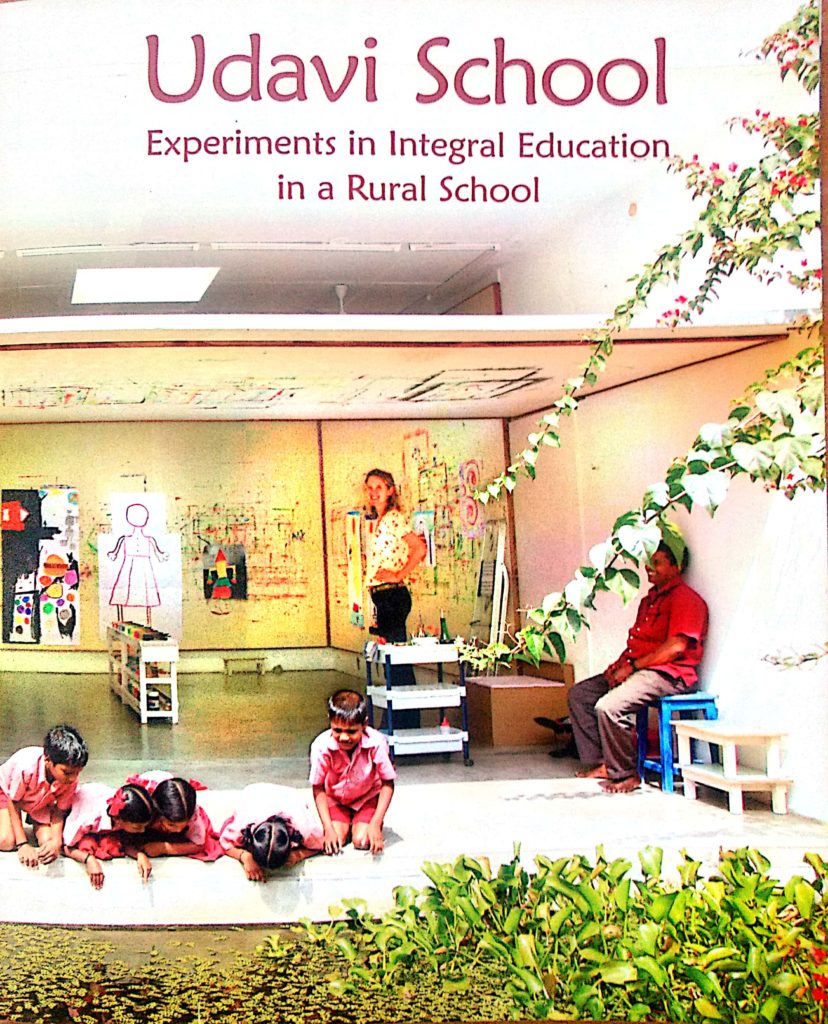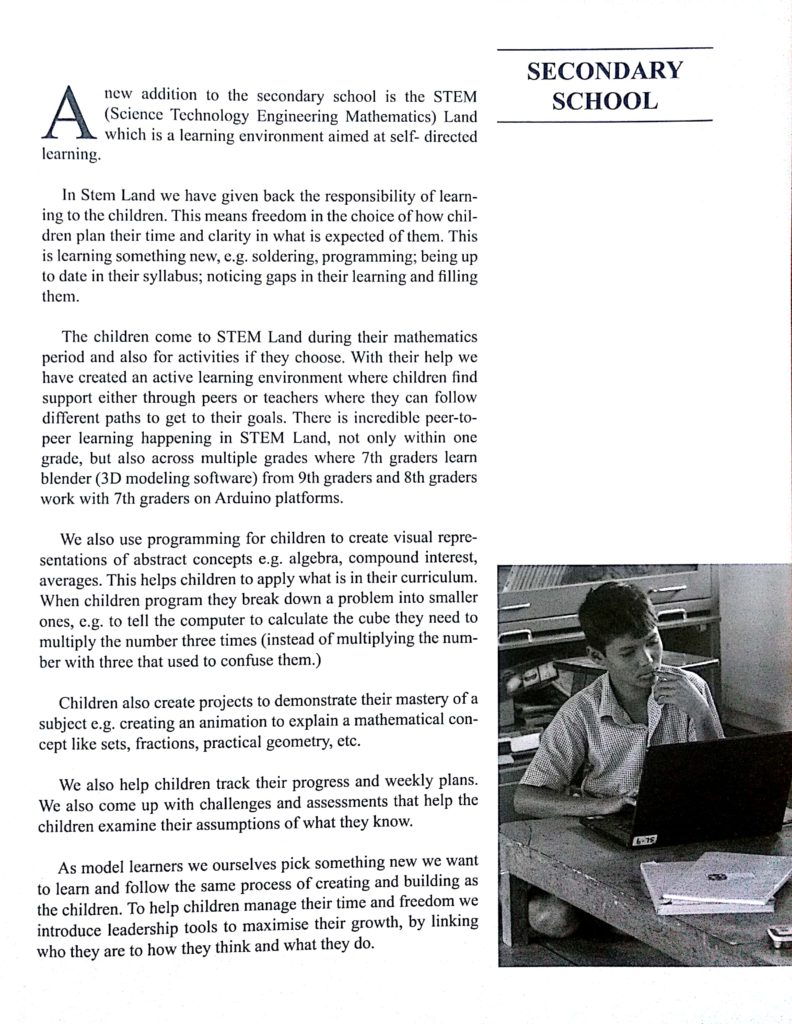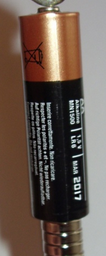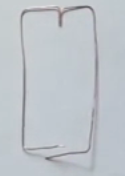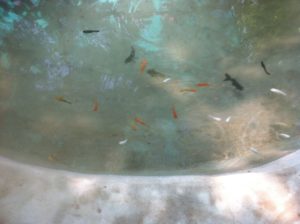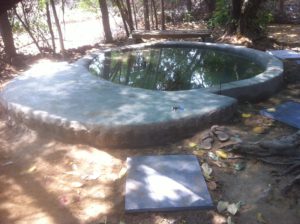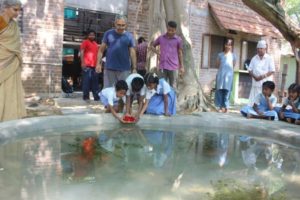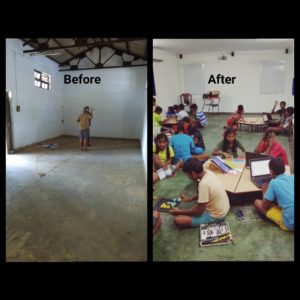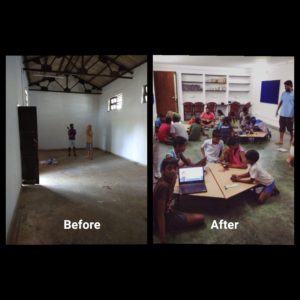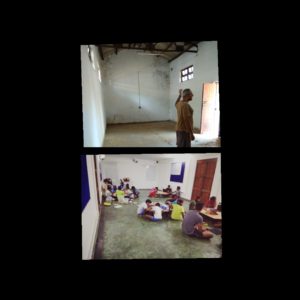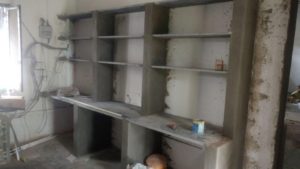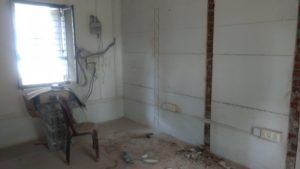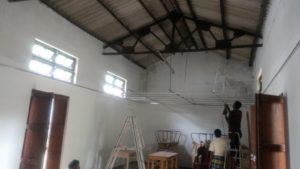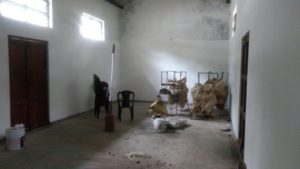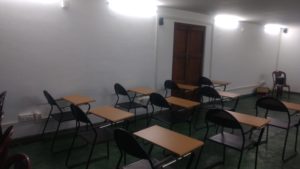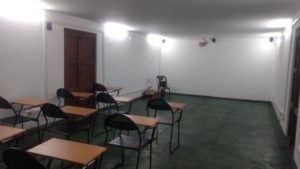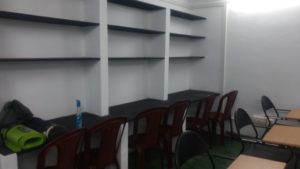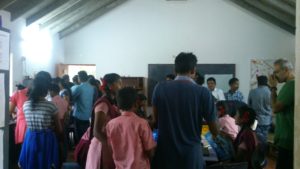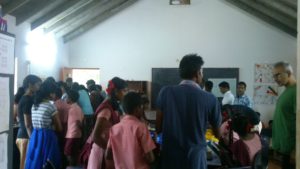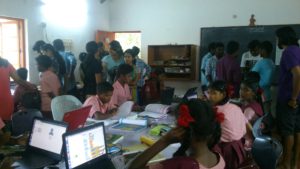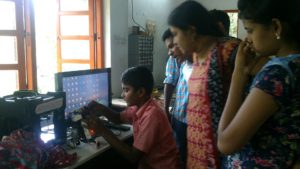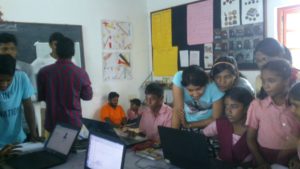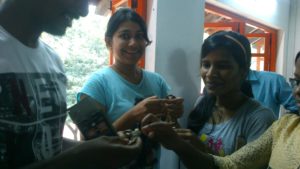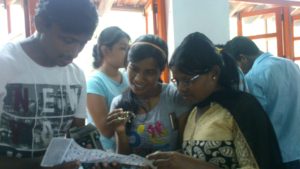Volunteer in STEM Land
Pranav (who left Google) to volunteer with us for 4 months generated interest in children to work on mobile apps. Children in STEM land have created mobile applications on MIT app inventor. Children felt easy to buit an app by coding as they are used to do using scratch. He also helped with the visualization software for children track their progress. He supported children to record their projects to present during the inauguration of i-SMART class. He was very friendly with children but then he had to leave. The day before he had to leave, we asked him few questions and the answers he gave are https://www.youtube.com/watch?v=3rS6uQmeX-U&feature=youtu.be
Patterns with 2nd standard
In Isai Ambalam school 2nd graders had a difficulty in finding the pattern. When I use Dienes blocks and jodo cubes to identify the patterns. I asked the children to arrange the cubes in different orders that they have seen it in real life. I split them into two groups and asked them to arrange th cubes in patterns. They started doing that and then shared how they arranged the numbers from 1 – 10. When I used the Dienes block it was difficult for them to tell how many blocks are used visually. Then I used Jodo blocks it was big and they were in different colors. Children were able to tell the different patterns. They were able to see it visually and they were able to draw it on a paper. They helped each other to identify the pattern. They were able to tell the different patterns that they saw in their house.
Udavi School yearly booklet
link to pdf: STEMland_Udavi
Making Homopolar motor with 7th graders
Janani and Vishal made a homopolar motor. Janani got excited when she saw this experiment online and she wanted to build one on her own.
Making:
Materials needed: 1*AA battery, 3*neodymium magnet, Coper wire of length30cm.
Step 1: Place the three magnets at the negative terminal of the battery.
Step 2: Bend the coper wire as shown in the figure. Make sure it is not insulated, if so please scratch the wire till you get rid of the enamel.
Step3: Put all of them together. Place the coper bend wire on top of the positive terminal of the battery and other end touching the negative terminal of the battery.
Take a look at the video:
- The current in this homopolar motor flows in the presence of a magnetic field. When a current flows in a magnetic field, it will experience something known as the Lorentz force. The Lorentz force is what causes the wire to spin around the battery.[1]
- The wire connects to the battery at three points. One point of the wire is on the positive terminal, and the two ends of the wire are near the magnet, on the negative terminal. The current flows out of the positive terminal and down both sides of the wire. The magnetic field pushes the current outwards, causing the wires to rotate.[2]
sources:
- 1.↑ http://www.physicscentral.com/experiment/physicsathome/homopolar-motor.cfm
- 2. ↑ http://www.evilmadscientist.com/2006/mhd-i-demonstrate-magnetohydrodynamic-propulsion-in-a-minute/
Isai Ambalam Pond
In Isai Ambalam school for one week there was no water. The bore water didn’t work. We started having a conversation how to over come this problem. During that week it rained a lot. Since it is a slope the water didn’t stay there. The ground was wet. Children wanted build a pond. They started digging the behind Sanjeev’s house. They measured the length of the pond. Then they started digging the pond. After digging they wanted to cement it. Children started buying bricks and cement bags. During sleep over we started cementing the pond and it was really a good experience with children.
We started with the first layer of cement and let it to dry. Then fixed chicken mesh on top of the first layer. We added mesh to prevent cracks. Then again we started add cement as a third layer. Then the pond didn’t look nice without a boundary. So we bought bricks with the children and started making a cylinder shape. Finally we smoothen it with cement. After that we wanted to leave make a sitting bench. We built a sitting bench.
Then we inaugurated the pond by leaving the fish in the pond. We also estimated how much cement bags were used. We learnt to find the volume of the cement bag and the pond. We also learnt to use the mason tools. Children were able to do in a group and everyone had equal opportunities to share their work.
Before – After Images of iSmart Classroom
STEM land Walkthrough
It was a combined class with the 7th and 9th graders. I observed that everyone were engaged and were working with their peers and facilitators.
I decided to take a short video of whats happening.
Spinner: MIT app inventor
A child from 7th grade made a spinner using MIT app inventor. He took 3 weeks to complete the project.
MIT app Inventor: It is an application where you can make mobile app. It is similar to scratch where you can stick blocks.
The child shares his experience in the video and how he made it.
Visitors to STEM Land
We usually have visitors to STEM Land and this week around 20 trainees of the Puchki program(trains teachers to take up environmental aspects) in Auroville had come to STEM Land. They were so excited to see what the children were doing in STEM Land. They were also happy to see how things were organized in STEM and how children learn. They said that, the way children worked here had really inspired them to learn more. Children solved the rubrics cube, demonstrated Lego mindstorm and showed their projects made in Scratch and Geogebra and also explained to them how what they did works. The visitors also put on their logical thinking hats and worked on a few cast puzzles. They saw some children de-soldering the old project kits at the soldering station also asked a few questions to the children about it. The room was filled with lots of energy and eagerness to learn and there I realized the purpose of STEM Land to learn, grow and teach.


